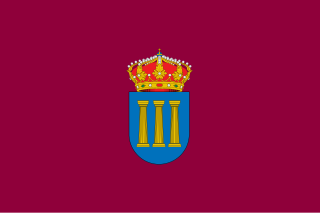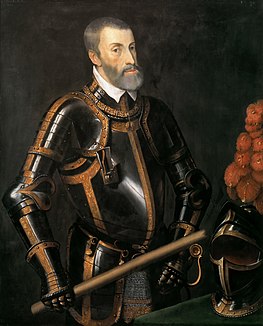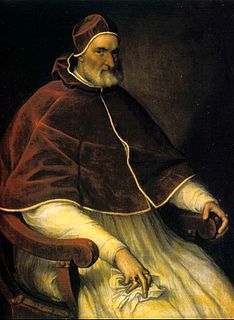
Francisco Álvarez Martínez is the former archbishop of the Spanish see of Toledo and a Cardinal in the Roman Catholic Church.

The Roman Catholic Archdiocese of Burgos is one of Spain's Latin Metropolitan sees.

Pedro Segura y Sáenz was a Spanish Cardinal of the Roman Catholic Church who served as Archbishop of Toledo from 1927 to 1931, and Archbishop of Seville from 1937 until his death. Segura was elevated to the cardinalate in 1927.
Giovanni Carafa, Duke of Paliano, was a papal nephew and minor Italian prince.
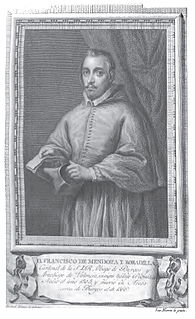
Francisco Mendoza de Bobadilla was a Spanish Roman Catholic Cardinal.

The papal conclave of 1572, convoked after the death of Pius V, elected Cardinal Ugo Boncompagni, who took the name Gregory XIII.

Antonio Zapata y Cisneros, also listed as Zapata y Mendoza, was a Spanish bishop. He served as bishop of Cádiz and Pamplona, archbishop of Burgos, cardinal, councillor of state for Philip III, Viceroy of Naples, and Inquisitor General of the realm.
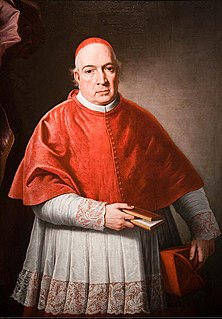
Diego de Astorga y Céspedes was a Spanish Cardinal of the Roman Catholic Church. He also served as Bishop of Barcelona, Archbishop of Toledo and Grand Inquisitor.

Alfonso Carrillo de Acuña was a Spanish politician and Roman Catholic archbishop.
Gonzalo García Gudiel (1238/9–1299) was a Castilian prelate and statesman in the service of kings Alfonso X and Sancho IV and Pope Boniface VIII. He was Bishop of Cuenca (1272) and Burgos (1275) and Archbishop of Toledo (1280), the first official Primate of Spain (1285) and finally Cardinal-bishop of Albano (1298) at the curia Romana. His early career was that of an international scholar, before he settled into royal service.
Diego Guzmán de Haros was a cardinal of the Roman Catholic Church from 1629 to 1631.

The papal conclave of 1559 was convened on the death of Pope Paul IV and elected Pope Pius IV as his successor. Due to interference from secular rulers and the cardinals' disregard for their supposed isolation from the outside world, it was the longest conclave of the 16th century.

Pedro Pacheco de Villena also known as Pedro Pacheco Ladrón de Guevara, was a Spanish cardinal and viceroy of Naples. In Italian his name is spelled Pietro Pacecco. His nephew Francisco Pacheco de Toledo was also a cardinal.

Íñigo López de Mendoza y Quiñones, was the first Marqués de Mondéjar, and second Conde de Tendilla. He was known as El Gran Tendilla, and was a Spanish noble of the House of Mendoza. He was the son of Íñigo López de Mendoza y Figueroa, the first Conde de Tendilla, and the grandson of the poet Íñigo López de Mendoza, 1st Marquis of Santillana.

Juan Castellar y de Borja (1441–1505) was a Spanish Roman Catholic bishop and cardinal.

Bartolomé de la Cueva y Toledo (1499–1562) was a Spanish Roman Catholic Roman Catholic cardinal and bishop.

Girolamo di Corregio (1511–1572) was an Italian Roman Catholic cardinal and bishop.
Gaspar de Zúñiga y Avellaneda was a Spanish Roman Catholic cardinal and bishop.
Fernando de Toledo Oropesa (1520–1590) was a Spanish Roman Catholic priest who was made a cardinal but who refused the honor.
Pedro Rodríguez de Quexada or Petrus Hispanus was an ecclesiastic from Castile.


